Even in Denmark, where our most formidable snake is a modest viper, I’ve always harbored a deep-seated fear of them. Yet, that fear is inextricably linked to a powerful fascination—especially for the venomous kinds. It’s a mix of dread and awe that draws me to learn about the world’s most formidable reptiles, and none embody this duality better than the Gaboon viper.
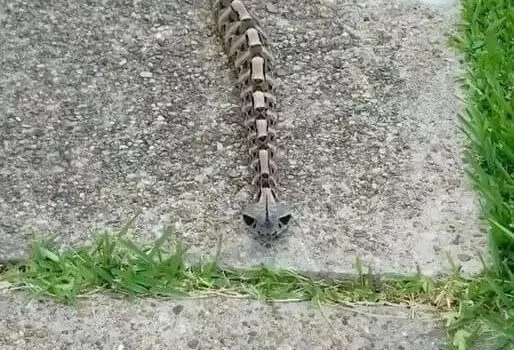
Deep in the heart of Africa’s rainforests and savannas lives a serpent that is a true masterpiece of evolution. This isn’t just a snake; it’s a phantom, an ambush artist, and a potent predator all in one.
Today, we’re delving into the world of this unique creature, exploring the remarkable traits that make it one of Africa’s most respected and feared inhabitants.
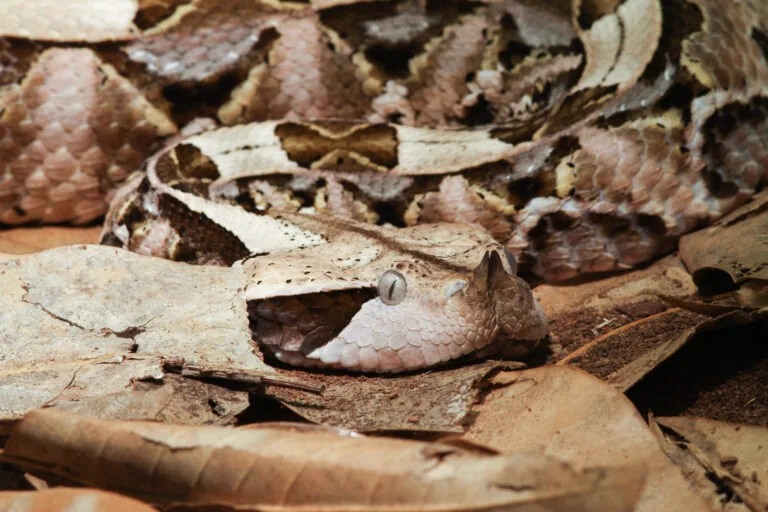
A Phantom in the Leaves
The Gaboon viper’s greatest weapon isn’t its venom; it’s its invisibility. A true “master of camouflage,” its skin is a complex tapestry of geometric patterns in shades of brown, tan, and purple, perfectly mimicking the dappled light and leaf litter of the forest floor. This allows it to lie perfectly concealed, becoming an unseen part of the landscape itself.
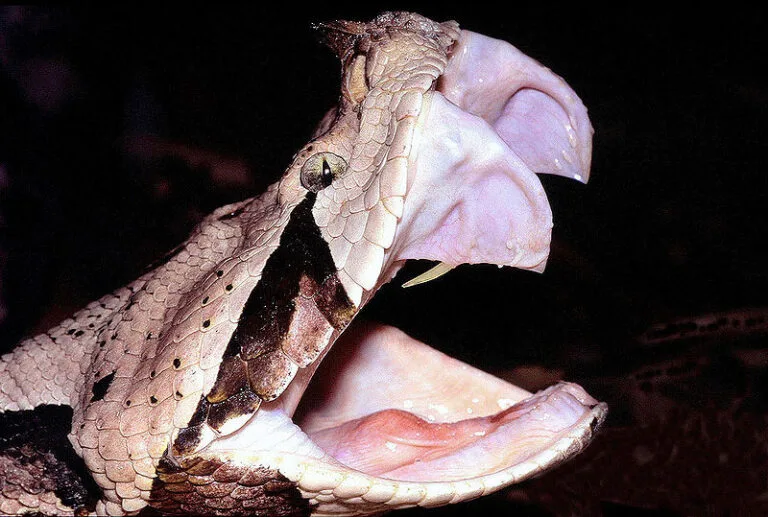
A Formidable Physique
This is no ordinary snake. The Gaboon viper is a heavyweight, one of the largest venomous snakes in the world. It can grow over 1.8 meters long and weigh more than 9 kg, with a stout, powerful body and a distinctively large, triangular head.
But its most terrifying features are hidden. It possesses the longest fangs of any snake, capable of growing up to 5 centimeters—imagine hypodermic needles that can deliver a devastating payload deep into its prey. That payload is a potent cocktail of cytotoxins and hemotoxins, a venom designed to cause severe tissue destruction, unbearable pain, and can be fatal without immediate treatment.
The Patient Predator
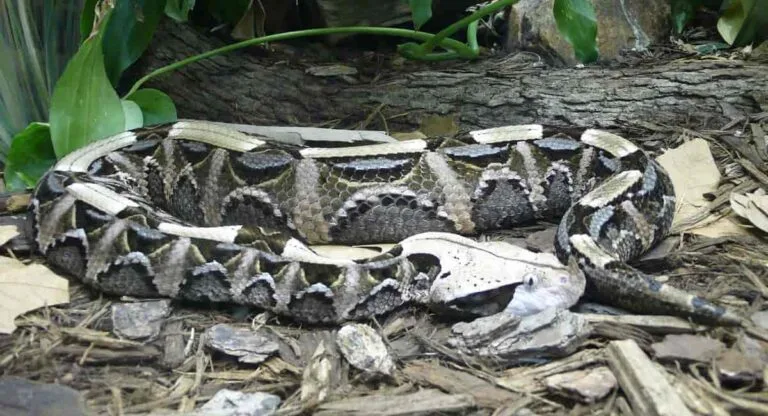
The Gaboon viper is the epitome of patience. It doesn’t chase its food; it becomes part of the scenery and waits. It can remain motionless for weeks, relying on its flawless camouflage, until an unsuspecting rabbit, monkey, or even a small antelope wanders within range. Then, in a lightning-fast strike, it attacks. Unlike many snakes that bite and release, the Gaboon viper often holds on, ensuring its immense volume of venom is delivered directly into the bloodstream of its prey.
A Cautious Coexistence with Humans
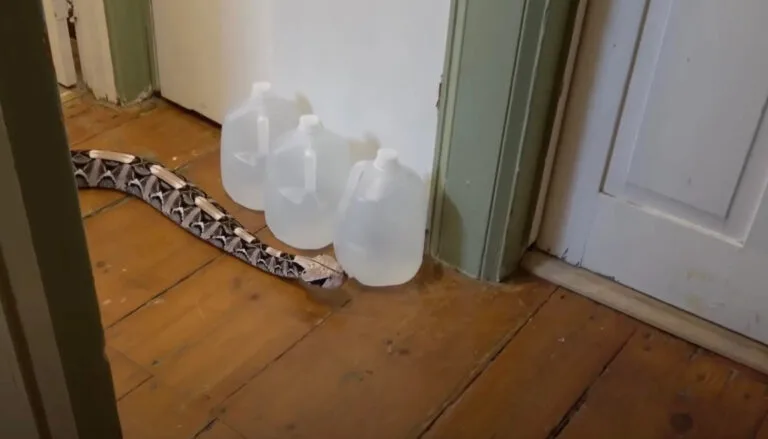
Despite its fearsome arsenal, the Gaboon viper is notoriously placid. Fatal encounters with humans are rare, as it prefers to remain hidden and will only strike as a last resort, typically when accidentally stepped on. However, when bites do occur, the consequences are severe and require urgent medical intervention with specific antivenom.
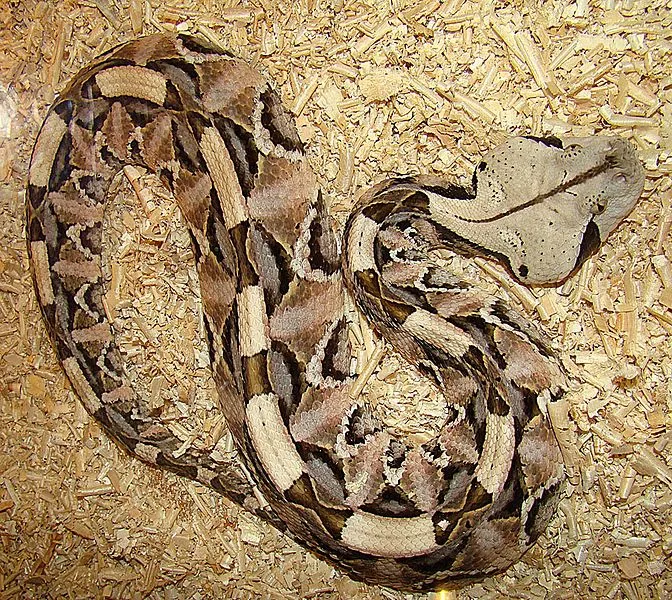
This danger hasn’t stopped some daring exotic pet enthusiasts from keeping them outside their natural habitat—a decision with potentially disastrous consequences. In 2022, two separate incidents in the United States highlighted the risks:
-
In Virginia, a owner was bitten and required 35 bottles of antivenom, which had to be urgently sourced from zoos and aquariums.
-
In North Carolina, another man was bitten and needed a staggering 44 doses of antivenom, tragically losing several fingers to the venom’s tissue-destroying effects.
These cases serve as a stark reminder that some wild animals are best admired from a distance.
A Viral Sensation
The viper’s incredible camouflage was put on global display in 2021 when a video from The Reptile Report went viral. It showed one of these snakes being spotted on a street, and to the amazement of millions, it didn’t look like a snake at all. Its unique, crawling motion and patterned body made it appear almost exactly like a large, crawling caterpillar—a perfect demonstration of its evolutionary genius.
The Gaboon viper is more than just a dangerous snake; it is a breathtaking example of natural adaptation. It has perfected the art of the ambush, thriving silently in the heart of the African wilderness, a creature that commands both our deepest fear and our utmost respect.


